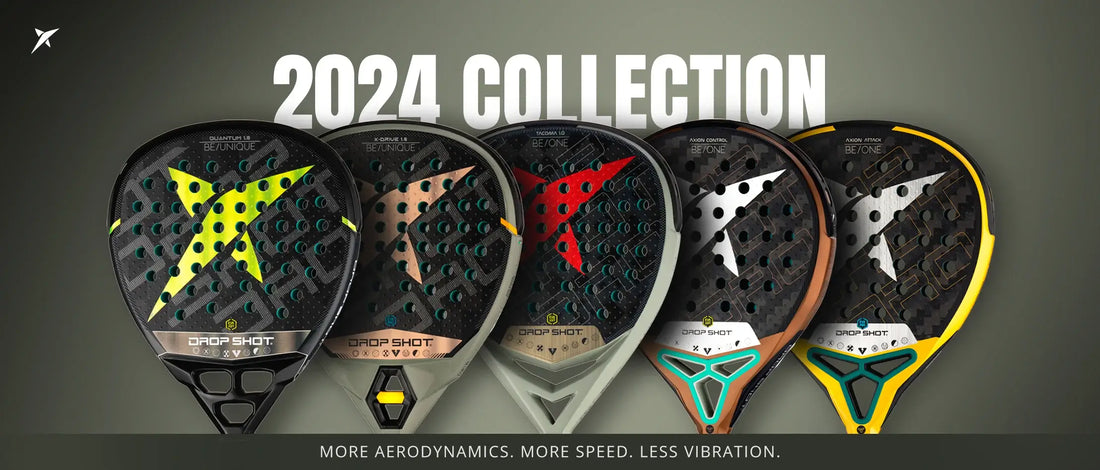If you’re looking for a new racquet sport to dive into, you’ve likely come across both padel and pickleball. These two dynamic games are gaining popularity across Australia, offering unique blends of excitement, strategy, and physical activity. But which one should you pick?
Padel and pickleball might seem similar at first glance, but they each bring something different to the court. Whether you’re after a fast-paced, social game or a more strategic, skillful challenge, understanding the key differences can help you make the best choice for your lifestyle and fitness goals. Ready to discover which one suits you better? Let’s break it down.
Overview Of Padel
Padel combines elements of tennis and squash, offering a unique and engaging experience. It's a doubles sport that's gaining widespread popularity worldwide.
History And Origins
Padel originated in Mexico in 1969. Enrique Corcuera, the inventor, designed it with a smaller court and walls for rebounds. The sport spread to Spain and Argentina quickly, where it found huge popularity. Today, Spain boasts over 20,000 padel courts.
Rules And Gameplay
Padel courts are 20 metres long and 10 metres wide. Unlike tennis, the walls are part of play, similar to squash. Each game starts with an underhand serve and follows similar scoring to tennis. Doubles teams alternate hitting the ball until a point is won. The ball must bounce once before it hits the wall. Winning requires agility and quick reflexes.
Equipment Needed
Padel requires a specific set of equipment. Padel racquets are smaller, solid, and perforated, unlike tennis racquets. Players use pressurised balls with slightly less bounce. You need a pair of comfortable shoes designed for court sports. The right gear ensures better performance and safety.
Overview Of Pickleball
Pickleball has become increasingly popular over recent years. The sport blends elements of tennis, badminton, and table tennis, creating a versatile and engaging activity.
History And Origins
Pickleball originated in the United States in 1965. Joel Pritchard, Bill Bell, and Barney McCallum invented the game on Bainbridge Island, Washington. They intended it as a family pastime. The sport’s name has several theories, one being that it comes from the Pritchard family dog, Pickles, who would chase after the ball.
Rules And Gameplay
Pickleball is typically played on a court measuring 20 feet by 44 feet. Games can involve singles or doubles. The net is set at 34 inches in the centre. Players use pickleball paddles to hit a perforated polymer ball. The game starts with an underhand serve, and points are scored when the opposing team faults. The scoring method is simple: only the serving team can score, and games are generally played to 11 points, requiring a two-point lead to win.
Equipment Needed
Playing pickleball requires specific gear. You'll need a paddle, which resembles an oversized table tennis paddle. The ball used is lightweight with holes. Additionally, the sport doesn't demand a specialised court; you can set up a portable net on many surfaces, such as a gym floor or driveway. Proper athletic shoes provide stability and support during play.
Key Differences Between Padel And Pickleball
Understanding the key differences between padel and pickleball helps you decide which sport matches your interests. Each game offers unique features in terms of court dimensions, equipment, and scoring systems.
Court Dimensions And Surface
Padel courts measure 10 by 20 metres. They feature glass walls that remain in play, adding complexity to the game. The surface is usually artificial turf, providing a soft texture that supports dynamic movements.
Pickleball courts are smaller, measuring 6.1 by 13.4 metres. No walls are involved in play, simplifying the game environment. You can often find pickleball courts with hard surfaces like concrete or gym floors.
Ball And Paddle Differences
For padel, players use solid racquets that are perforated and shorter, enhancing control. The balls are similar to tennis balls but are slightly less pressurised, allowing for longer rallies.
In pickleball, the paddle is solid, wide and resembles an oversized table tennis paddle. The ball is lightweight and perforated, resembling a wiffle ball. These features allow for quick, precise exchanges.
Scoring System
Padel uses a similar scoring system to tennis. Points follow the structure of 15-30-40 and games need a two-point advantage to win. Matches are usually played in best of three sets.
Pickleball adopts a simpler scoring method. Points are scored only on the serve. Games typically go to 11 points and you must win by two points. This scoring system makes it accessible to beginners and casual players.
Popularity And Global Reach
Padel and pickleball are gaining global popularity, each captivating a unique audience. Let’s delve further into their popularity and reach.
Padel Popularity
Padel has seen remarkable growth, especially in Spain. Over 20,000 padel courts dot the country, indicating widespread interest. Originating in Mexico, it spread quickly to Argentina. Spain’s influence has helped padel thrive in Europe. Unlike some sports, padel's appeal spans various age groups, making it a family-friendly option. Dubai also shows rising interest, with new courts developing in various locations. The padel community benefits from a range of professional tournaments and a strong online presence, sustaining its growth.
Pickleball Popularity
Pickleball, originating in the US in 1965, has become a staple in many American communities. Known for its simplicity, it attracts varied individuals. Schools embrace it for physical education, encouraging young players. Community centres set up courts, popularising the sport among different age groups. Unlike padel, pickleball doesn't need specialised facilities; a portable net and any flat surface suffice. This flexibility contributes to its rapid adoption in places like Canada, Australia, and the UK. Professional associations and leagues further legitimize pickleball, enhancing its visibility.
Growth Trends
Clear trends mark the growth of both sports. Padel's expansion in Europe, driven by Spain, includes an increasing number of dedicated courts. This structured growth indicates strong grassroots and professional levels. Dubai’s investment in padel infrastructure highlights potential for future hubs in the Middle East. In contrast, pickleball shows a more organic spread, particularly in North America. The game's adaptability fosters community engagement and social play, driving popularity in recreational spaces. Both sports illustrate distinct yet equally significant upward trajectories in their respective domains.
Physical And Health Benefits
Both padel and pickleball offer various physical and health benefits, making them excellent choices for maintaining an active lifestyle.
Health Benefits Of Padel
Playing padel provides a comprehensive workout. The sport involves significant cardiovascular activity, as the continuous rallies and swift movements increase your heart rate. This aerobic exercise helps in burning calories, improving cardiovascular health, and maintaining a healthy weight.
Padel also enhances muscular strength. The dynamic movements and quick reflexes required strengthen your legs, arms, and core muscles. You'll find your agility and balance improving as you regularly engage in the sport. Eye-hand coordination is another vital skill honed through frequent padel play, sharpening your reflexes and timing.
Stress reduction is a notable benefit. The physical exertion releases endorphins, promoting a sense of well-being and reducing stress levels. Additionally, playing padel in doubles form fosters social interaction, which can uplift your mood and support mental health.
Health Benefits Of Pickleball
Pickleball also offers significant health advantages. Its quick-paced nature promotes cardiovascular health. The short, intense bursts of activity help burn calories effectively, enhancing overall fitness levels.
Muscle tone and strength receive a boost from pickleball. Regular play engages various muscle groups, particularly the thighs, calves, shoulders, and forearms. The game’s rapid exchanges and frequent directional changes improve your agility and coordination. Balance, crucially important as you age, benefits from the sport's dynamic nature.
Social engagement is a key aspect. Pickleball fosters community spirit, with games often played in groups. This interaction can enhance psychological well-being, reducing feelings of isolation and stress. Additionally, the relatively low impact of pickleball makes it accessible to individuals of all ages and fitness levels, promoting long-term engagement and health benefits.
Both sports, through their unique characteristics, contribute to your physical health and well-being.
Conclusion
Choosing between padel and pickleball ultimately depends on your preferences and fitness goals. Padel offers a dynamic and social experience with its unique court and strategic gameplay, while pickleball provides a versatile and accessible option suitable for all ages. Both sports not only enhance physical health but also foster community spirit and social interaction. Whether you're drawn to the high-energy rallies of padel or the adaptable nature of pickleball, engaging in either sport will bring numerous benefits to your lifestyle. Explore both and find the perfect fit for your active routine.








